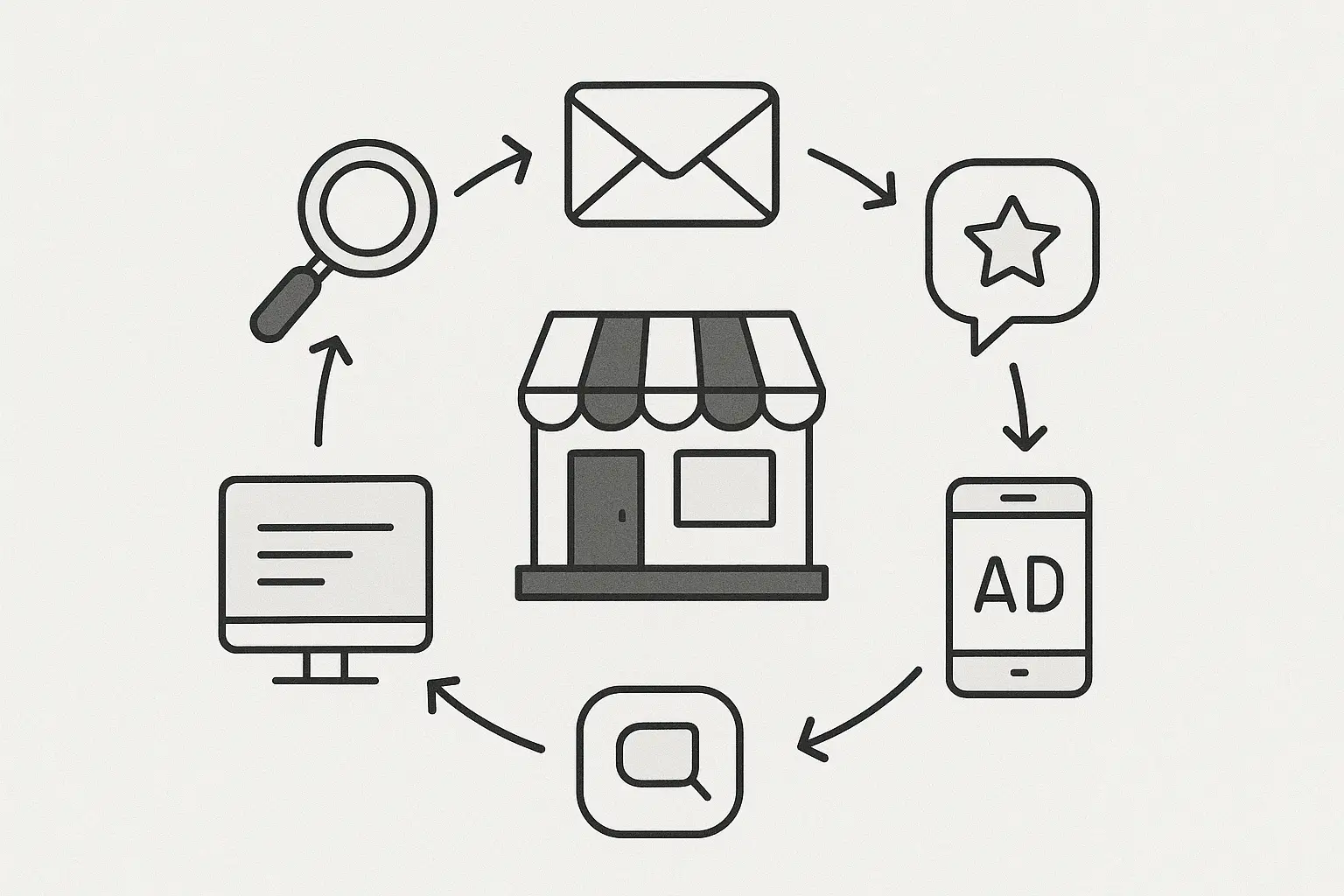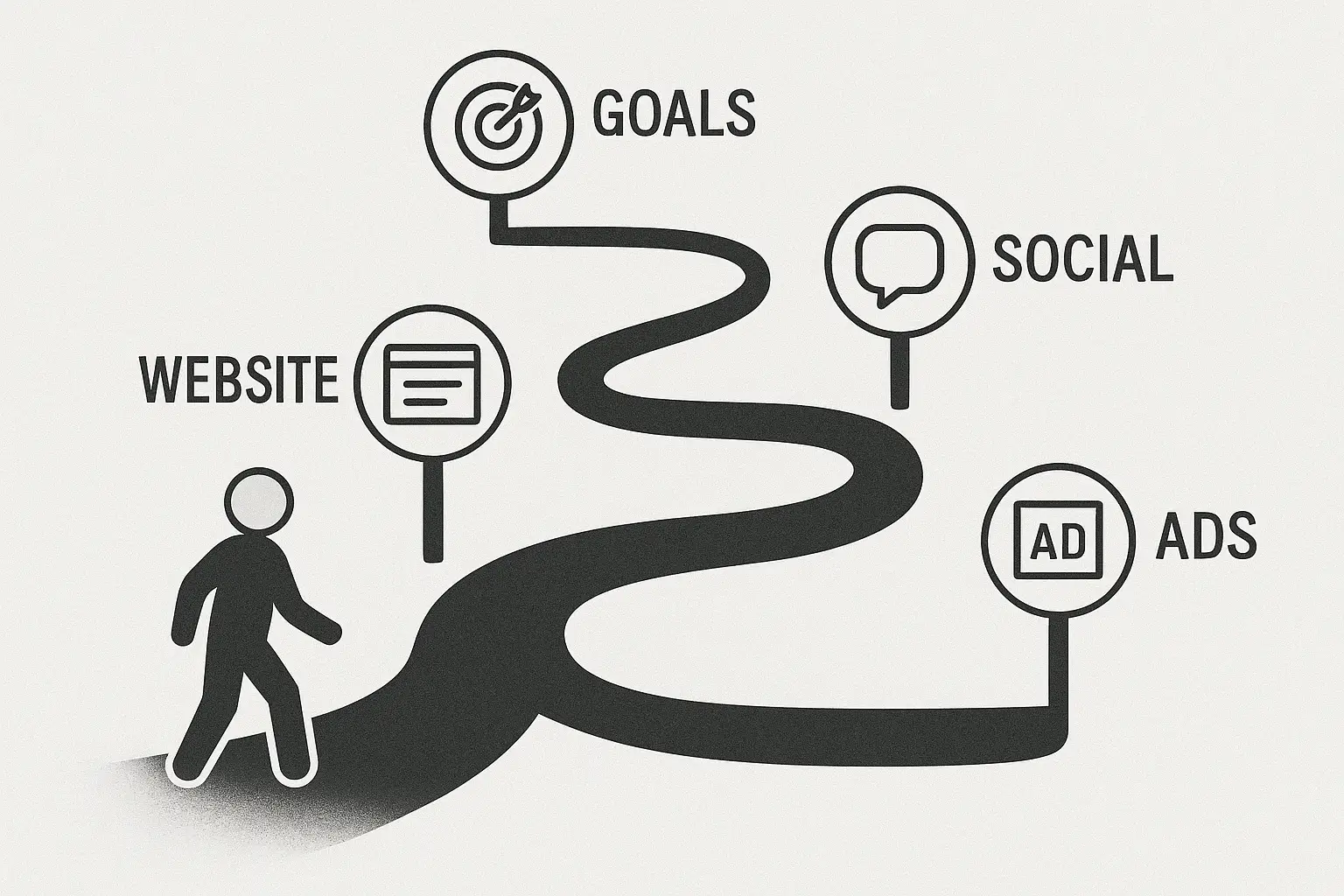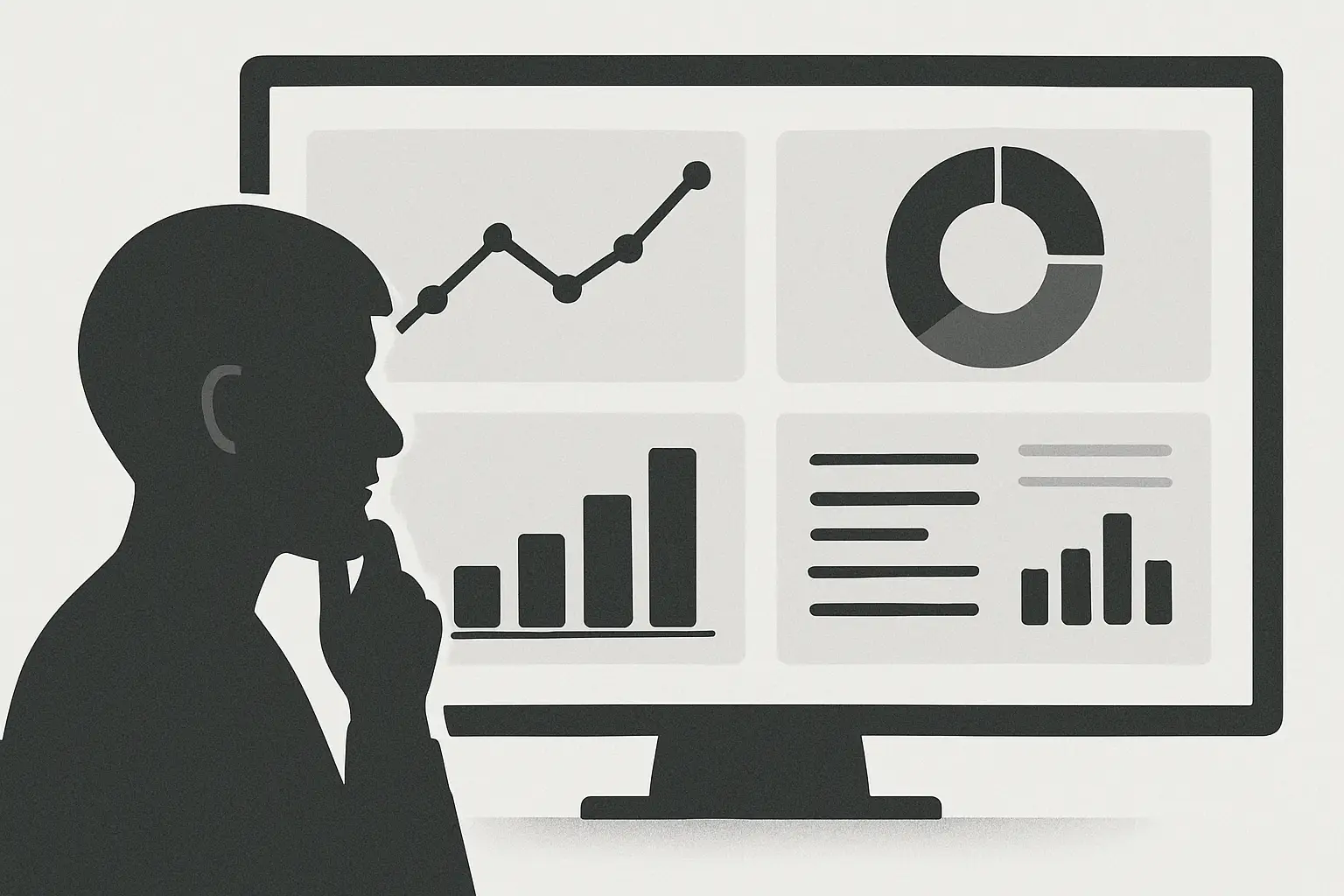Many small businesses are losing potential customers every day simply because they aren’t showing up where people spend most of their time—online. Falling behind means missed sales, wasted effort, and limited growth.
This article covers the benefits of digital marketing for small businesses, including ways to reach more buyers, attract better leads, build credibility, and drive revenue. You’ll also learn how to start and what methods work best.
Why Small Businesses Need Digital Marketing
Traditional marketing methods—print ads, billboards, flyers—often demand large budgets and offer little control over who sees the message. For small businesses with limited resources, this makes growth harder and less predictable.
Digital marketing shifts that balance. It gives business owners direct access to tools that help target potential buyers by interest, location, and behavior. Instead of guessing, campaigns can be built using real data. You can test different ideas quickly, refine them, and stop what doesn’t work.
Most importantly, your competitors are already using these methods. If you aren’t, you’re giving them an advantage.
Why is Lead Generation in Digital Marketing Important?
Without a steady stream of leads, sales dry up. It’s that simple. For small businesses, generating interest from the right people is critical—not just for survival, but for staying competitive.
Digital marketing allows you to attract potential buyers who are already looking for what you offer. Through channels like search engines, social media, and email, you can reach them when they’re most likely to act. Unlike cold outreach or mass advertising, these efforts are targeted and based on user behavior.
This kind of lead generation means:
- Reaching people who are more likely to convert
- Spending less on outreach that doesn’t work
10 Benefits of Digital Marketing for Small Businesses
Below are ten clear advantages, based on what actually works:

1. Wider Reach and Global Audience Access
Relying on foot traffic or word-of-mouth only goes so far. With the right digital tools, a single product listing or ad can be seen by people across the country—or even overseas.
What makes this so useful is control. You decide who sees your message and when. A local business in Michigan can ship candles to customers in Arizona because someone found their Instagram post or searched for “hand-poured soy candles” on Google.
Some ways small businesses are reaching beyond their local areas:
- Using Google Ads to appear in search results nationwide
- Setting up Instagram Shops or Facebook Marketplace listings with shipping options
2. Precise Targeting and Personalization
Not every visitor is a buyer. Digital tools let you focus on those who are more likely to care.
You can sort potential customers by:
- Age, gender, income range
- Shopping habits and online behavior
- Interests and search history
Instead of showing one broad ad to everyone, you can run several variations depending on who you’re trying to reach. This keeps spending in check and often leads to better results.
For example, Facebook’s ad manager lets you build custom audiences based on your own website traffic. Someone who viewed your pricing page can be shown a follow-up ad with a discount offer.
And according to a Think With Google report, personalized advertising can improve ad performance dramatically.
3. Cost-Effectiveness and Better ROI
Most small businesses don’t have the budget for large-scale ad campaigns. Digital platforms help by letting you control costs down to the penny.
You can start with just $5 a day on Facebook or run a Google search campaign with a daily cap. There’s no need to lock into a long-term contract or spend thousands upfront. This makes it easier to test different ideas without taking big risks.
Also, you can see where your money is going:
- Track clicks, signups, or sales directly from each ad
- Pause or change campaigns instantly if they aren’t working
Unlike a billboard or print ad, you’re not guessing who saw it or what happened next. You get actual numbers to work with.
This visibility helps small teams avoid overspending and focus only on what brings in revenue.
4. Measurable and Trackable Results
If you can’t see what’s working, you’re stuck guessing. That’s one of the biggest problems with traditional marketing—you pay upfront and hope it delivers. With digital marketing, you can track everything as it happens.
Tools like Google Analytics and Meta’s Ads Manager give you real numbers:
- How many people clicked a link
- Which device they used
- How long they stayed on your page
- What actions they took next (form fill, purchase, etc.)
Let’s say you’re running two ads. One brings in five times more clicks than the other. You’ll know within a day and can shift your budget accordingly.
You can also track phone calls, store visits, or email opens with tools like CallRail or Mailchimp, giving small businesses the same data visibility that larger firms use.
5. Enhanced Customer Engagement and Relationship Building
Getting a sale is one thing—getting someone to come back is another. Repeat customers are often worth more than new ones, and digital channels help you stay connected long after the first purchase.
You don’t need a big team or budget to do this well. A few smart tactics include:
- Replying to customer comments or questions on social media
- Sending helpful or seasonal email updates
- Writing blog posts that solve specific problems for your audience
People are more likely to buy from businesses they’ve interacted with or heard from regularly. If you answer a question on Instagram or share helpful tips through email, you stay top of mind.
According to a study from HubSpot, 80% of consumers are more likely to buy from brands that respond to their messages on social platforms.
These simple interactions help build trust, which turns into repeat business.
6. Flexibility and Adaptability
Markets shift. Customer needs change. What worked last month might fall flat today.
One major advantage of digital marketing is the ability to adjust quickly. You can pause a campaign, change your messaging, test new headlines, or try a different call to action—all in real time.
For example:
- Launch a Google ad and test two versions with different headlines
- Run an email to a segment of your list before sending it to everyone
- Update a landing page based on what customers click most often
7. Competitive Advantage
Smaller businesses often assume they can’t compete with big companies—but that’s not always true online.
Search engines and social media platforms don’t favor the biggest spender by default. They reward relevance and engagement. That means a well-run local campaign can outperform a national brand in a specific area or category.
Here’s how small businesses can stand out:
- Using local SEO to show up in “near me” searches
- Writing blog posts that answer questions your customers actually ask
- Building a loyal audience through consistent interaction and updates
With tools like Google Business Profile, you can appear in map results, collect reviews, and post updates—all without paying a cent.
This gives small businesses a real shot at showing up where it counts. And when you rank for location-based keywords, you don’t have to fight for attention nationwide—just in your own neighborhood.
For a closer look at how small businesses compete with SEO, Moz offers a solid guide to local search.
8. Improved Brand Awareness and Credibility
People rarely buy from a business they’ve never heard of. The more often someone sees your name, logo, or message, the more familiar and trustworthy you seem.
Digital marketing helps with this in low-cost ways:
- Regular posts on platforms like Instagram, LinkedIn, or YouTube
- Consistent branding across your website, email, and social pages
- Asking happy customers to leave reviews on Google or Yelp
These small actions build recognition. Over time, when someone needs your product or service, they’re more likely to remember and trust your name.
Credibility isn’t built overnight—but regular online activity makes a difference. According to BrightLocal, 98% of consumers read online reviews for local businesses, and 87% won’t consider a business with low ratings or few reviews.
That kind of trust starts with showing up and being consistent.
9. Access to Multiple Marketing Channels
Before, businesses had to pick one or two ways to reach customers—radio, print, maybe direct mail. Now you can use several channels at once, without needing separate teams or budgets for each one.
Some options include:
- Search ads (Google, Bing)
- Social media (Facebook, Instagram, TikTok, LinkedIn)
- Email campaigns
- Video (YouTube, Reels, Shorts)
- Content like blog posts or how-to guides
This multi-channel approach helps because not everyone uses the internet the same way. Some people search, others scroll, and many rely on recommendations.
Being present in more than one spot increases the chance that your message lands where it matters.
10. Increased Sales and Lead Generation
Every benefit listed above—visibility, trust, targeting—feeds into one goal: getting more sales or leads without wasting time.
Small businesses don’t always need volume. They need quality. By attracting people who are already searching for your product or who’ve interacted with your brand before, you close more deals with less effort.
Even a simple lead capture form on your website—paired with a clear message—can bring in daily inquiries. Add retargeting ads or a follow-up email, and that single visitor becomes a paying customer.
Digital marketing connects the dots:
- A visitor sees an ad
- Clicks through to a product
- Signs up for a discount
- Buys a few days later after a reminder email
How to Get Started with Digital Marketing for Your Small Business
The steps below walk you through exactly what to do—and in what order—so you build a setup that works and scales with you.

Step 1: Define Clear Business Goals
Start with what you’re trying to achieve. Not every business wants the same outcome.
Common goals include:
- Getting more calls or messages from local customers
- Selling products through an online store
- Growing an email list for long-term marketing
- Building visibility in a specific city or region
You can’t pick tools or strategies until your goals are nailed down. Once you know what you’re aiming for, the rest becomes much easier to map out.
Step 2: Know Your Audience Inside Out
The better you understand your customers, the more effective your marketing will be. Go beyond age and gender.
You need to know:
- What problems they’re trying to solve
- Where they spend their time online
- What kind of content or tone they respond to
- What holds them back from buying
Use insights from your current customers—talk to them, check reviews, or look at site behavior using tools like Google Analytics or Hotjar.
Step 3: Build or Improve Your Website
If your website is slow, confusing, or hard to use on a phone, people will leave. Fast.
Here’s what to check for:
- Mobile compatibility: Over 60% of users browse on phones
- Simple navigation: Users should find what they need in 1–2 clicks
- Clear calls to action: Buttons that say what to do (Buy Now, Book a Call, etc.)
- Contact info that’s easy to find
- Fast load time (under 3 seconds is ideal—test it at PageSpeed Insights)
If you don’t have a website, start with something simple like Squarespace, Shopify, or WordPress using a clean, functional template.
Step 4: Set Up Google Business Profile (if Local)
If your business depends on local traffic—like a restaurant, salon, or auto shop—Google Business Profile (formerly Google My Business) is a must.
Claim and fill out your profile with:
- Accurate hours, contact info, and location
- Photos of your storefront, staff, or products
- A short, clear business description
- Posts or offers to update regularly
- Review responses to build credibility
This helps you show up in map results and “near me” searches—often before someone even clicks a website.
Step 5: Choose the Right Marketing Channels
You don’t need to use every platform. Choose 2–3 that match your goals and audience behavior.
Some smart starting points:
- Search ads (Google Ads) for fast visibility
- Facebook/Instagram ads for visual products or local reach
- Email marketing to keep in touch with interested leads
- Content marketing (like blogs or how-to guides) to build organic traffic over time
Step 6: Set Up Tracking and Analytics
Without tracking, you’re flying blind. Before launching campaigns, make sure you can measure what matters.
Minimum tracking setup should include:
- Google Analytics (to monitor visitors, traffic sources, and behavior)
- Meta Pixel (if running Facebook or Instagram ads)
- UTM parameters (to label and trace campaign traffic)
- Conversion tracking (form submissions, purchases, calls)
Set this up before you start spending. That way, you know exactly what’s driving leads or sales—and what isn’t.
Step 7: Test, Learn, and Adjust Weekly
Digital marketing isn’t one-and-done. It’s a cycle of small improvements.
Every week, look at:
- Which campaigns brought in traffic or leads
- Where drop-offs happened (high bounce rates or low clicks)
- What times/days brought the best results
- Cost per result and how it compares to your goal
Pause what’s not working. Double down on what is. Make small changes often, not huge overhauls once in a while.
6 Common Digital Marketing Strategies for Small Businesses
Here’s a breakdown of six digital marketing strategies that work well for most small businesses:
SEO Basics for Small Businesses
SEO is what helps your site show up in Google’s unpaid (organic) search results. For small businesses, this can drive long-term traffic without ongoing ad costs.
Start with the essentials:
- Keyword research: Find out what your customers are searching (use tools like Ubersuggest or Google Keyword Planner)
- On-page SEO: Include keywords in page titles, headers, and body content—naturally, not stuffed
- Mobile and page speed: Make sure your site loads quickly and works on phones
- Local SEO: Add your business to Google Maps, local directories, and include city/region names in your content
Tip: A blog section answering real customer questions (e.g., “How much does a roof inspection cost in Denver?”) can improve rankings over time.
Pay-Per-Click (PPC) Advertising
PPC lets you show ads to people actively searching for your product or service. You only pay when they click.
Google Ads and Microsoft Ads are the main platforms for search-based PPC, but platforms like Facebook also allow PPC on social feeds.
Why it works:
- Shows your offer to people ready to buy
- You control the daily budget and can pause anytime
- Fast results—you can be visible within hours of setting it up
Start small—$10 to $30 a day—and track conversions closely. It’s not about high traffic; it’s about qualified clicks that lead to sales.
Social Media Marketing Tips
Social media isn’t just about posting—it’s about being part of the conversation.
Pick 1–2 platforms where your customers actually spend time. For example:
- Facebook for local services or general audiences
- Instagram for visual products like food, clothing, or design
- LinkedIn for B2B or professional services
Some proven tactics:
- Post 2–3 times a week (consistency > volume)
- Use Stories or Reels for quick product demos or behind-the-scenes clips
- Reply to every comment or message—fast replies improve visibility
- Share content that answers common questions or solves problems
Tools like Buffer or Later help schedule posts without logging in every day.
Content Marketing Ideas
Content helps attract visitors through search, educates your audience, and builds trust over time.
You don’t need to publish daily—quality matters more. Start with:
- How-to guides based on your service (e.g., “How to prepare for a home appraisal”)
- FAQ pages answering real customer questions
- Case studies or customer stories
- Short videos or blog posts that explain what you do and why it matters
If writing isn’t your strength, you can use tools like Grammarly to polish your work or hire part-time help for editing.
Email Marketing Best Practices
Email is still one of the highest-return channels out there—when done right. It works well for small businesses because it’s low-cost, easy to automate, and keeps you in touch with people who’ve already shown interest.
To get results:
- Start building a list early: Use simple forms on your website offering a discount, free guide, or useful info
- Segment your audience: Don’t send the same message to everyone; group by behavior, purchase history, or interest
- Keep it short: Focus on one message per email (a product update, limited-time offer, or event reminder)
- Send regularly—but not constantly: Once a week or every other week is often enough
Tools like Mailchimp, ConvertKit, or MailerLite are beginner-friendly and offer free tiers for small lists.
Local SEO and Google My Business Optimization
If your business serves a specific area, local SEO is one of the most valuable tactics you can use. It helps you show up when people nearby are searching for what you offer.
Here’s what to prioritize:
- Claim and complete your Google Business Profile: Fill out every section—hours, services, photos, FAQs, etc.
- Use local keywords: Add your city, neighborhood, or region into your site’s page titles and descriptions
- Get customer reviews: Encourage happy clients to leave reviews on Google and respond to them
- Post weekly updates: Google gives more visibility to active listings
Measuring Success: Key Metrics to Track
If you don’t track results, you’ll never know what’s working—or what’s wasting your time and budget. Here’s what to watch, how to read the numbers, and what to do next based on what you find.

Website Traffic and Sources
Start by tracking how many people visit your site—and where they’re coming from. Use Google Analytics to monitor:
- Traffic sources: Search, social, ads, direct, or referral
- Top landing pages: What pages people enter your site through
- New vs. returning visitors: Are you bringing in new leads or nurturing existing ones?
Pay attention to spikes or dips. They often point to changes in campaign performance, search rankings, or ad quality.
Conversion Rates and Sales
Not every visitor becomes a buyer—but you need to know what percentage do.
Track:
- Form submissions
- Online purchases
- Click-to-call actions from mobile
- Quote requests or booking confirmations
Use these to calculate your conversion rate: (conversions ÷ visitors) × 100
If your site gets 1,000 visitors and 30 people submit a form, your rate is 3%. This helps you gauge how well your pages and offers are working.
Customer Engagement Metrics
Look beyond clicks. Are people actually interested in what you’re sharing?
Key metrics include:
- Email open and click-through rates
- Social media shares, comments, and saves
- Time on page and scroll depth on blogs or landing pages
ROI and Cost Per Acquisition (CPA)
This is where it all comes together. The goal is to spend less acquiring a customer than they’re worth to your business.
Track:
- Ad spend vs. revenue generated
- Cost per lead (CPL)
- Cost per acquisition (CPA) = total spend ÷ number of paying customers
Let’s say you spent $500 and gained 10 new clients. Your CPA is $50. If each client is worth $300 to you, the numbers make sense.
Conclusion
With digital marketing, results aren’t instant, but they build steadily when done right. Traditional marketing alone can’t offer that kind of adaptability or insight. If growth, better margins, or stronger customer relationships matter to your business, digital marketing isn’t just worth considering—it’s the smartest path forward. Start small, stay consistent, and refine as you learn.
What is the primary benefit of digital marketing for small businesses?
It helps attract targeted customers online with lower costs and better control compared to traditional advertising.
How does digital marketing help small businesses?
It drives traffic, captures leads, builds trust, and allows real-time adjustments to improve sales and customer reach.
What are the 5 advantages of digital marketing?
Targeted outreach, flexible budgets, real-time tracking, multi-channel access, and increased visibility without needing large ad spend.
What is the importance of digital marketing for a business?
Without it, you're invisible online. It’s how most customers discover, evaluate, and choose who they’ll buy from.
Which business needs digital marketing the most?
Any business that wants more leads, local visibility, or online sales—especially those competing against larger or more established brands.







